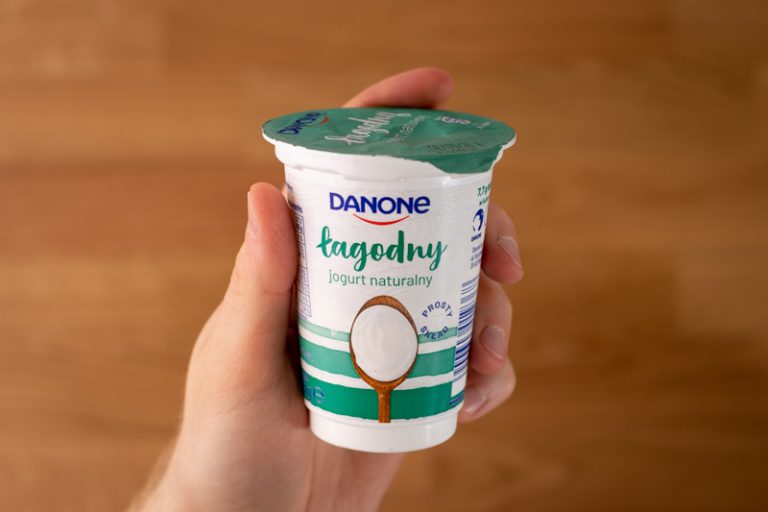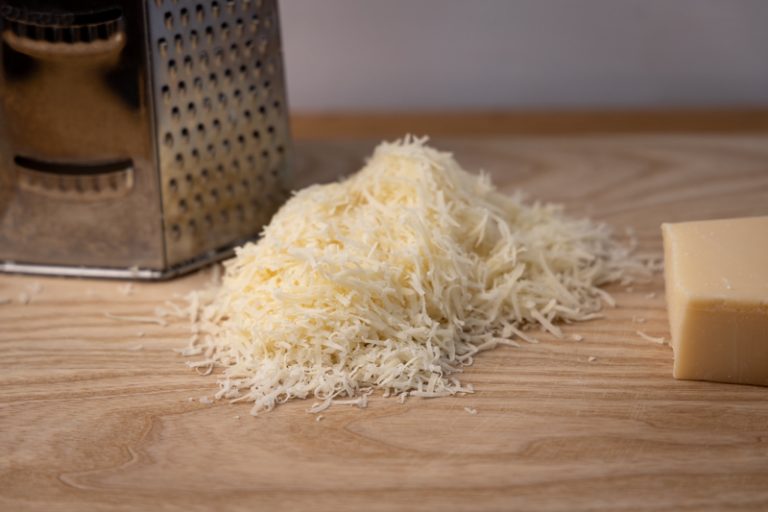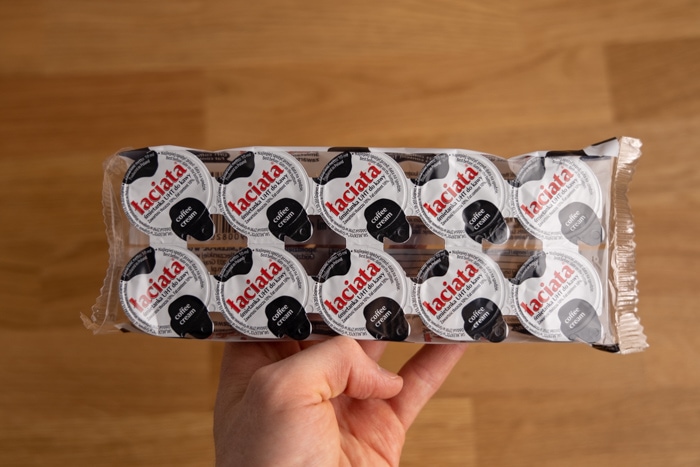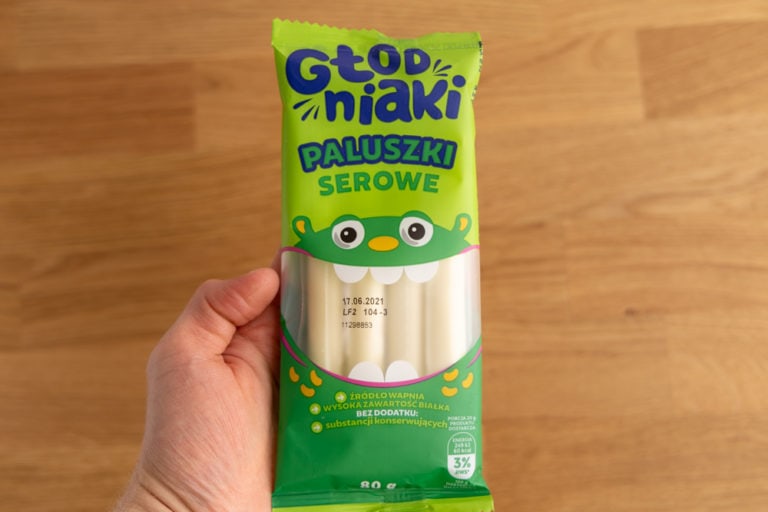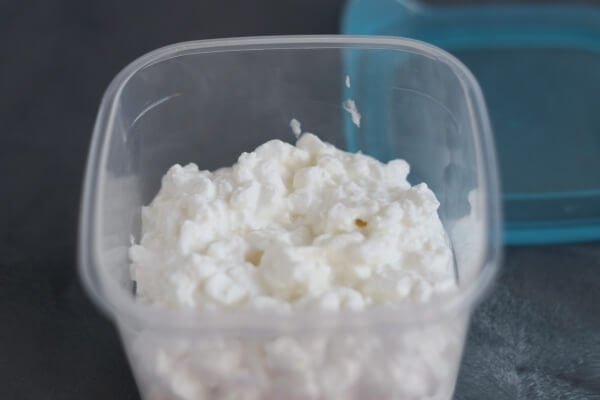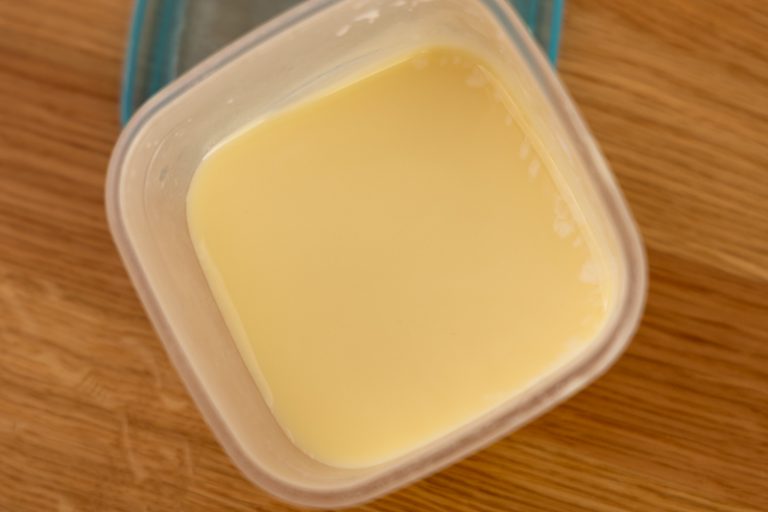Can You Freeze Sour Cream? (Before & After Pics)
You can freeze sour cream, but it separates heavily after thawing and is only useful in cooked or baked dishes. For other uses, using fresh sour cream is a much better option.
The freezing process is super simple, but before you start, you need to create a plan on how you’re going to use the cream after defrosting.
I cover those topics in detail in this guide. It is for you if you’d like to learn about:
- how freezing affects sour cream (including before and after photos)
- how to go about freezing this dairy product (if you decide to do so)
- ways to defrost sour cream
- what type of recipes you can use thawed sour cream in
- tips on making defrosted sour cream work in your recipes
Interested? Let’s go.
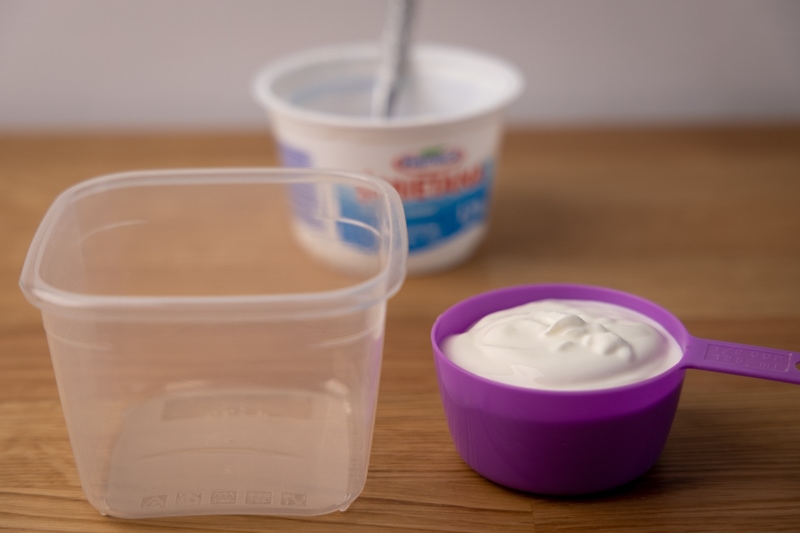
Can You Freeze Sour Cream?
The short answer is: yes, but only if you use it in cooked or baked recipes. Freezing alters the texture of sour cream heavily and those changes render it useless for many dishes. But for lots of recipes that involve cooking or baking, the separation that occurs isn’t a big deal.
That’s the gist of it.
I share what dishes you can make with frozen and defrosted sour cream later in the article, along with some tips. For now, let’s focus on how freezing affects sour cream.
For starters, dairy producers advise against freezing sour cream. Here’s what Daisy Brand says about freezing their products (DA):
Please avoid freezing your sour cream and cottage cheese, as it can adversely affect the creamy texture and all-natural flavor of the product.
Daisy Brand
Green Valley Creamery agrees (GV):
We do not recommend freezing our lactose-free yogurt, kefir, sour cream and cream cheese.
Green Valley Creamery
And they are right. Freezing affects the consistency of sour cream. After thawing, instead of the smooth texture you’re used to, it becomes grainy and separated.
Here’s how fresh sour cream compares to thawed:
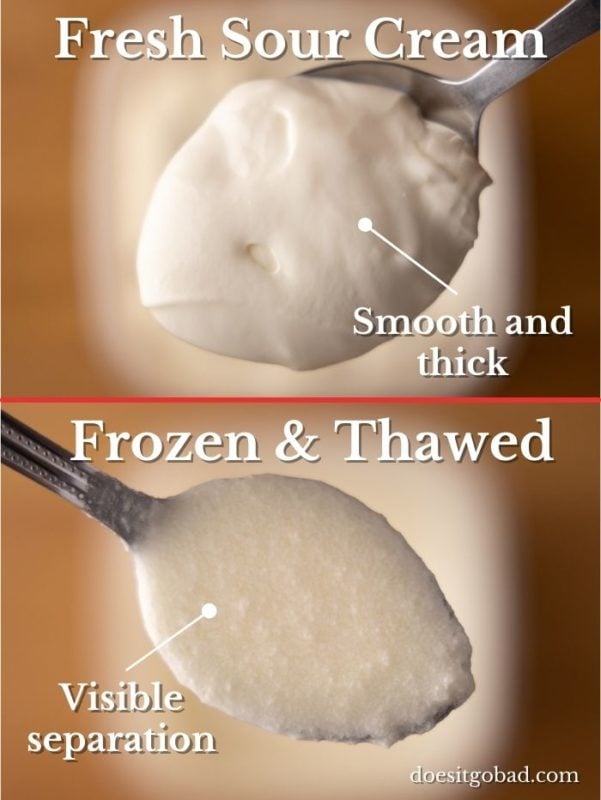
Can you fix separated sour cream by stirring it?
Not really. You can stir it with a spoon on even run it through a blender, but it won’t be quite the same. It will look better, but if you get a bit closer, you’ll see it’s nothing like before freezing.
Here’s what I’m talking about:
Using frozen and thawed sour cream in a dip or topping isn’t a good idea. They will neither look pretty nor taste good. For these, use fresh sour cream.
You’re not doomed, however.
As I already mentioned, this dairy product works just fine in many cooked and baked dishes. That’s because, in those dishes, you mix it with a bunch of other ingredients, and then cook the whole thing, changing its texture once again.
For example, here’s a bowl of pancake batter that I used my thawed sour cream in:
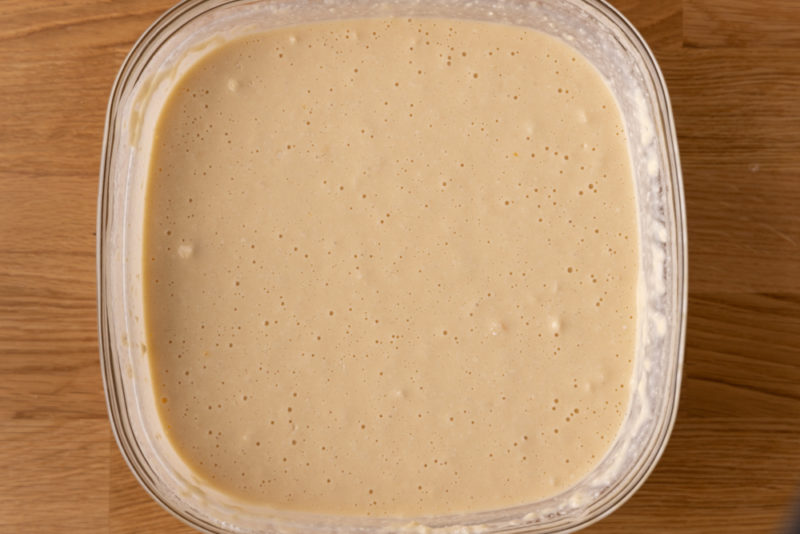
Looks perfectly normal, doesn’t it? And the pancakes I made were perfectly fine too.
All you need is a recipe or two that you can use the sour cream in in your repertoire. That’s it.
And if you don’t have any right now, no worries. I’ll give you some ideas later in the article.
How To Freeze Sour Cream
The process is super straightforward at takes only a couple of minutes to go through. Here’s how it goes:
How To Freeze Sour Cream
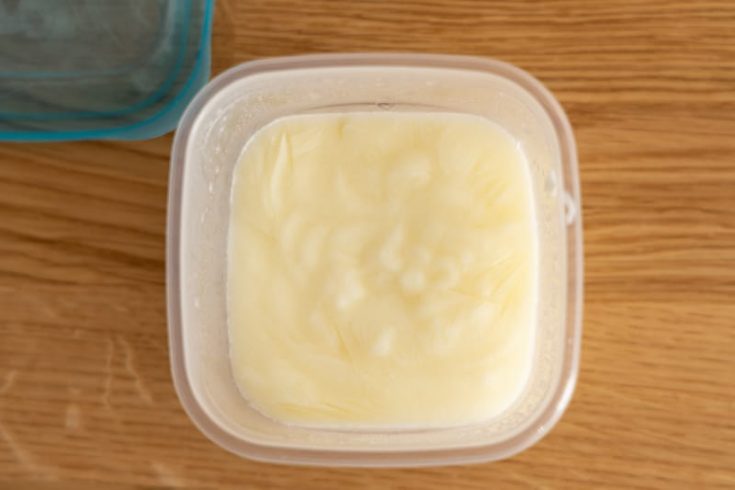
Quick and easy way to freeze sour cream.
Ingredients
- Sour cream
Instructions
- Stir the sour cream using a whisk to make the texture even.
- Portion the product. If you won't use all of the leftovers in a single dish, divide them into several portions. If you have already planned how you're going to use the thawed sour cream, portioning is super easy. If not, use smaller ones so that you won't have leftovers. Each portion goes into its own container or cube in an ice cube tray or muffin tin.
- Freeze the sour cream. Put everything into the freezer. If you went with airtight containers, that's it. If you went with cubes, leave the tray in the freezer until the dairy product freezes solid.
- (If not using containers) Transfer the frozen cubes into a freezer bag or container. Once the sour cream freezes, move the blobs into a bag or container to free up your tray and some space in the freezer. Place the bag back in the freezer.
Sour cream can last for up to two weeks of opening. Don’t throw it out after only a couple of days of storage.
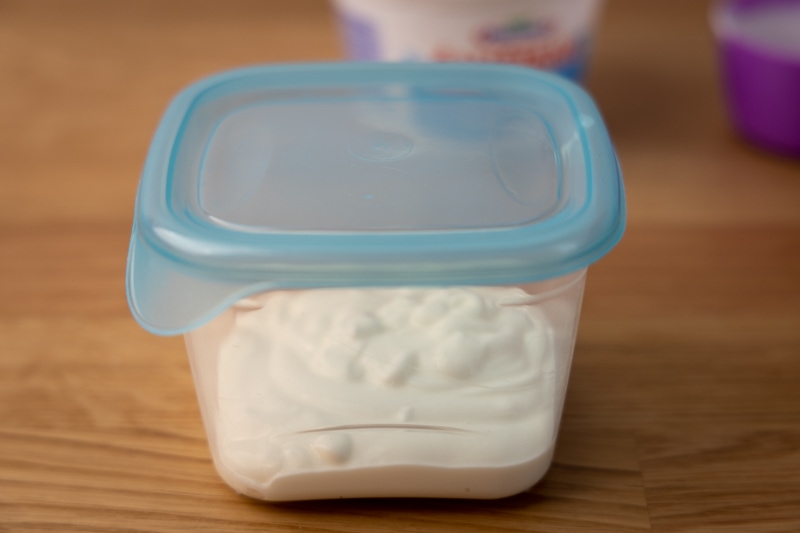
How To Defrost Sour Cream
When it comes to thawing sour cream, there are a couple of options. Let’s explore.
Thawing in the fridge
Thawing in the fridge is the safest method of thawing any dairy product.
Depending on your portions, it can take anywhere between 2 hours for small cubes to 8+hours for large containers. The easiest way is to do it overnight.
To speed things up a bit and make sure your sour cream is fully defrosted in the morning, place the container in a bowl of lukewarm water.
Here’s what I’m talking about:
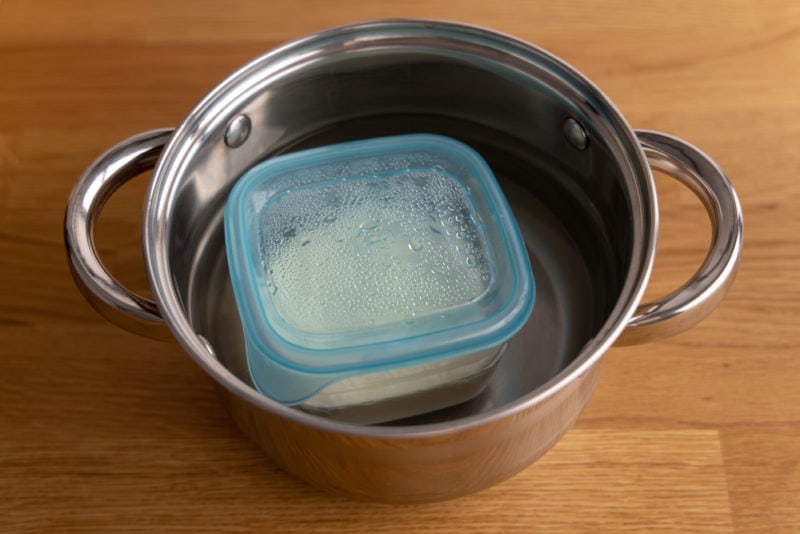
Thawing on the counter
Nobody recommends this method, and I don’t either. Leaving frozen sour cream at room temperature for an extended period allows bacteria that might be present to spread rapidly.
That’s no good.
That being said, I’m sure I’m not the only person who defrosted something on the counter because of time constraints.
If you’re in a hurry, place the container or bag with frozen sour cream in a pot of lukewarm water, and leave it on the counter. Using hot water won’t speed things up that much here.
To further accelerate the process, you can:
- change the water whenever it gets ice cold
- stir the contents of the container every 20 minutes or so
Again, do it at your own risk.
Add it frozen
If you have any at least lukewarm liquid (e.g., when cooking a soup), you can throw frozen sour cream directly into the pot and let it thaw there. It will defrost much quicker this way.
This option is your last resort. Whenever you can, thaw that sour cream before using it.
Frozen and thawed sour cream is separated, so you don’t have to worry about it curdling in cooking – it’ll always be curdled.
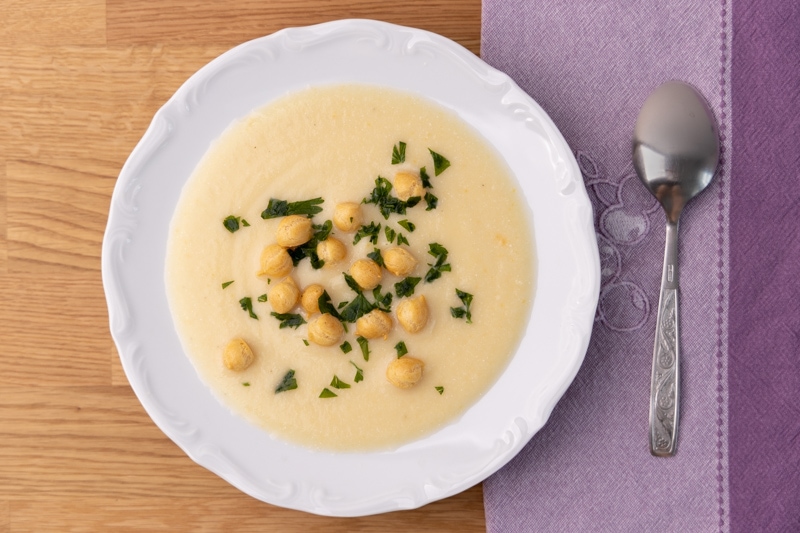
Uses for Thawed Sour Cream
There are hundreds of recipes in which frozen and thawed sour cream will work just fine. Because of that, I don’t link to specific recipes, but rather give you a list of ideas.
With that list, all you need to do is to google “[idea] sour cream recipe” to find a bunch of options to choose from.
Here they are:
- pancakes (classic use of thawed dairy products)
- muffins
- casseroles
- soups
- slow cooker stews, etc.
- pies (remember that toppings require fresh sour cream)
If you’ve seen my article on freezing heavy cream, you’re probably familiar with some of these.
Don’t get discouraged if a doesn’t turn out that great. Instead, move to the next recipe and give it a go. You should find some great ones in no time.
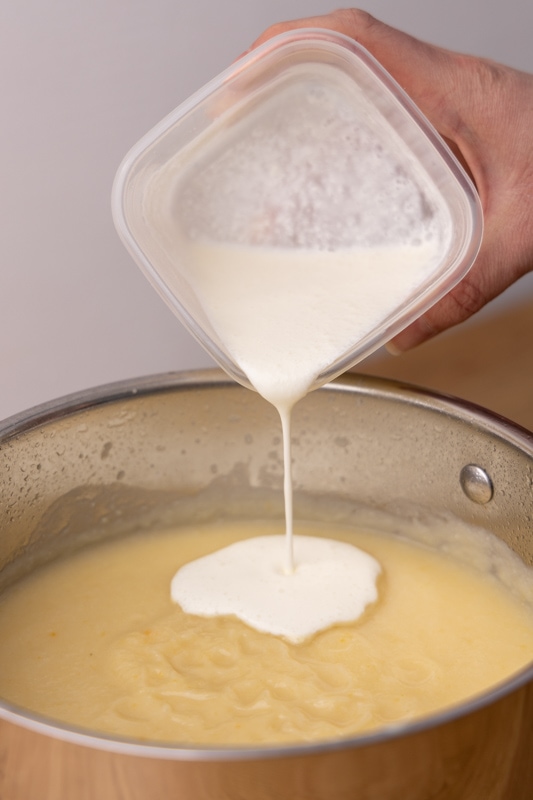
Tips For Using Thawed Sour Cream
Instead of leaving you with generic “use in cooked dishes” advice, I wanted to give you a handful of tips. These should help you succeed with using frozen and defrosted sour cream from the get-go.
Let’s dive right in.
Use it in recipes you’re familiar with
Try the recipe at least once with fresh sour cream before you make it with thawed one. Ideally, you want to know the ins and outs of the dish, but that’s not always possible.
Making it at least once with fresh ingredients helps you get the gist of it. You learn what to expect at each stage, and that comes in handy if you need to troubleshoot when using defrosted sour cream.
Also, if the dish turns out a bust, you cannot blame the thawed sour cream for it.
Pay attention to texture
Thawed sour cream is separated and not nearly as thick as a fresh one (surprisingly, it works the other way around for frozen cottage cheese). That might be an issue if the texture of your dish depends heavily on sour cream.
For instance, when making pancakes, you usually want the batter to have a certain thickness. If it’s runny, the resulting pancakes will be thin.
I don’t mind those, but if you like your pancakes thick and fluffy, you might need to fix the batter midway by adding more flour or adding less sour cream in the first place.
That’s why I cannot emphasize enough that you should be familiar with the recipe before using thawed sour cream in it.
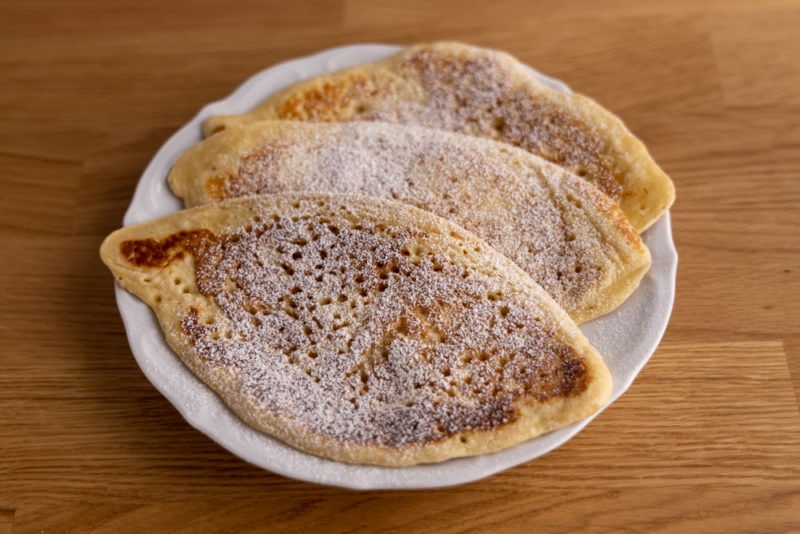
Mind the appearance
In soups, stews, and mashed potatoes, you might end up with visible white milk solids from the separated sour cream. It’s not frozen ricotta that looks quite the same as a fresh one. And no matter how long you stir the dish, they probably won’t disappear.
Here’s how these look like in mashed potatoes I did for my article on freezing buttermilk:
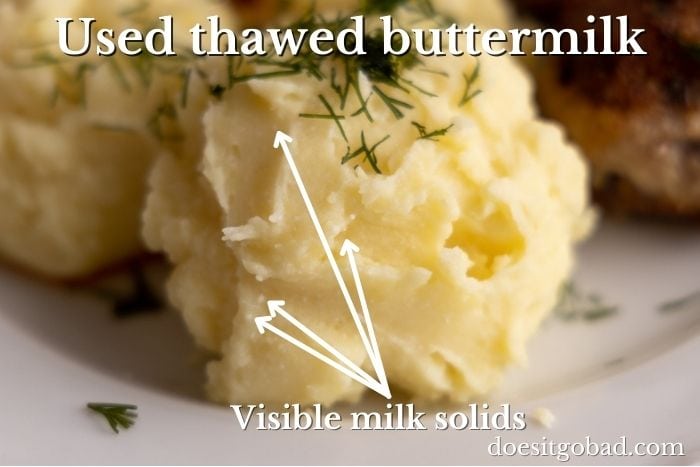
If you don’t mind a handful of white dots here and there, these aren’t an issue. But if you’d like to impress anyone with your cooking, it’s probably better to use fresh sour cream.
Make a big batch and freeze the leftovers instead
Instead of freezing sour cream that’s left from whatever you were cooking, consider cooking a larger batch and freezing the leftovers. Or whipping another dish with what you have left and freezing it.
For example, if you’re making pancakes, use the whole sour cream container to make more batter. You can then either freeze pancake batter or cook the pancakes and freeze them.
The same works for stews, casseroles, and the like. Just make sure that the dish freezes well.
This tip works great for all the lazy people out there (including yours truly) because it saves time and energy. You’re much more likely to grab a prepped meal from the freezer than to whip up something with that frozen sour cream.
This way, you avoid having a container or cubes in the freezer for months and feeling guilty about not using them. Or maybe that’s just me.
Use frozen cubes when a recipe uses lots of sour cream
If you have a few frozen sour cream cubes left, substitute them for some of the sour cream the recipe calls for. Or cook a slightly larger portion and use them.
That’s an easy way to finally use those last couple of cubes that have been sitting in the freezer for ages.
Besides that, if most of the sour cream you use is fresh (i.e., you only thaw a cube or two), you’re unlikely to run into any texture issues I mentioned earlier.
This tip still only works for cooked dishes. Don’t try to add thawed sour cream when you’re making a big batch of ranch.
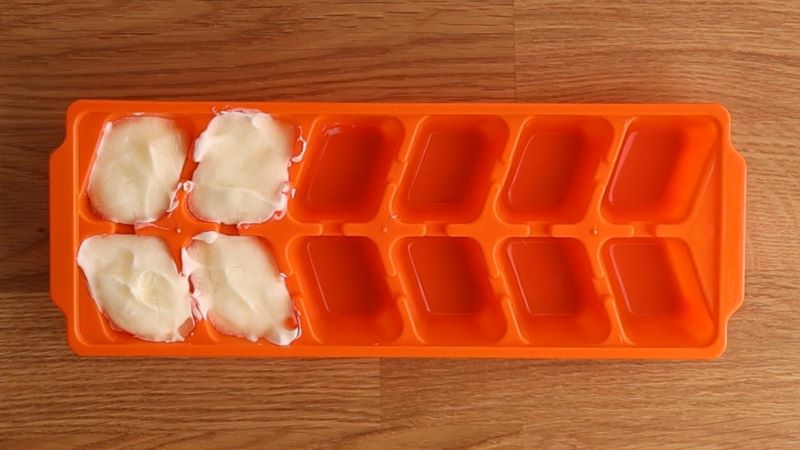
Sources
Rotten Records: Share Your Snap!
Caught some food past its prime? Upload your photo to “Rotten Records” and help others spot the signs of spoilage. Every image makes our food community safer and more informed!
